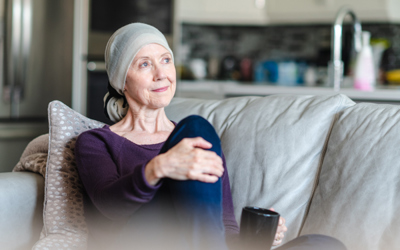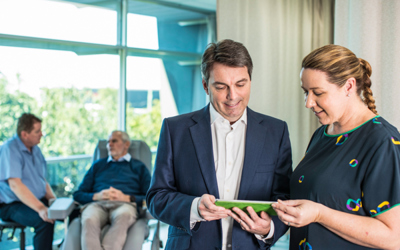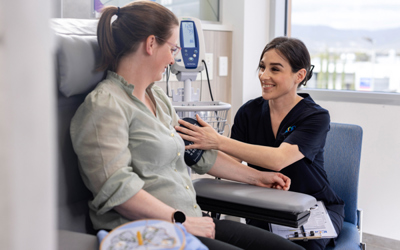Quick facts about chronic lymphocytic leukaemia
Chronic lymphocytic leukaemia (CLL) starts when the bone marrow produces partly-mature white blood cells that grow and spread abnormally
The white blood cells that CLL affects are called lymphocytes. They move through a large network of tissues and organs called the lymphatic system and impact areas such as the lymph nodes, spleen and liver. Normal lymphocytes mature into B-cells and T-cells, which fight infection
Chronic leukaemia develops slowly and may take months or years for symptoms to start showing. Because of this, around 30 to 50% of people diagnosed with CLL never require treatment
CLL is the most common type of chronic leukaemia, with more than 2,200 estimated cases in 2021
Almost 80% of CLL cases impact people over 60 years of age
Types of chronic lymphocytic leukaemia
CLL typically grows slowly, however sometimes CLL can be faster growing. CLL involves a subset of lymphocytes called mature B cells.
Most patients have a combination of both, which is known as CLL/SLL.
-
CLL
When only the blood and bone marrow is involved, it is known as CLL.
-
SLL
Some patients may only have lymph node and liver or spleen involvement, this is termed Small Lymphocytic Lymphoma (SLL).
Signs and symptoms of chronic lymphocytic leukaemia
As signs and symptoms for CLL can be similar to other common conditions, it’s important to see your GP or healthcare professional if you experience any of the symptoms below. In many cases, these symptoms may not show for months or years. Discussing anything concerning with your doctor as soon as possible can help give you peace of mind and offer the best chance of successful treatment if you receive a CLL diagnosis.
Although CLL has no symptoms in many cases and is often diagnosed during routine blood tests, symptoms may include:

Tiredness

Night sweats

Repeated infections

High temperature

Unexplained weight loss

Swollen, painless lymph nodes under the arms, neck or groin

Enlarged abdomen and feeling full after eating a small amount

Increased bleeding and bruising
Stages of chronic lymphocytic leukaemia
CLL is typically staged using the RAI system. This helps doctors understand what your cancer looks like.
The Binet system is also commonly used.
In general, patients with stage III or IV CLL, or those with rapidly growing lymph nodes, will require treatment. Even if your white blood cell count is very elevated, this alone does not mean that you will need to have treatment.
-
Stage 0
The patient has lymphocytosis with more than 5×109/L , but no other physical signs.
-
Stage I
The patient has lymphocytosis and enlarged lymph nodes. The patient does not have an enlarged liver or spleen, anaemia or low levels of platelets.
-
Stage II
The patient has lymphocytosis and an enlarged spleen and/or liver and may or may not have swollen lymph nodes.
-
Stage III
The patient has lymphocytosis and anaemia. The patient may or may not have swollen lymph nodes and an enlarged liver or spleen.
-
Stage IV
The patient has lymphocytosis and low levels of platelets. The patient may or may not have swollen lymph nodes, an enlarged liver or spleen, or anaemia.
Treatment for chronic lymphocytic leukaemia
There are many different types of treatment for chronic lymphocytic leukaemia. Your treatment will depend on you and your cancer.




